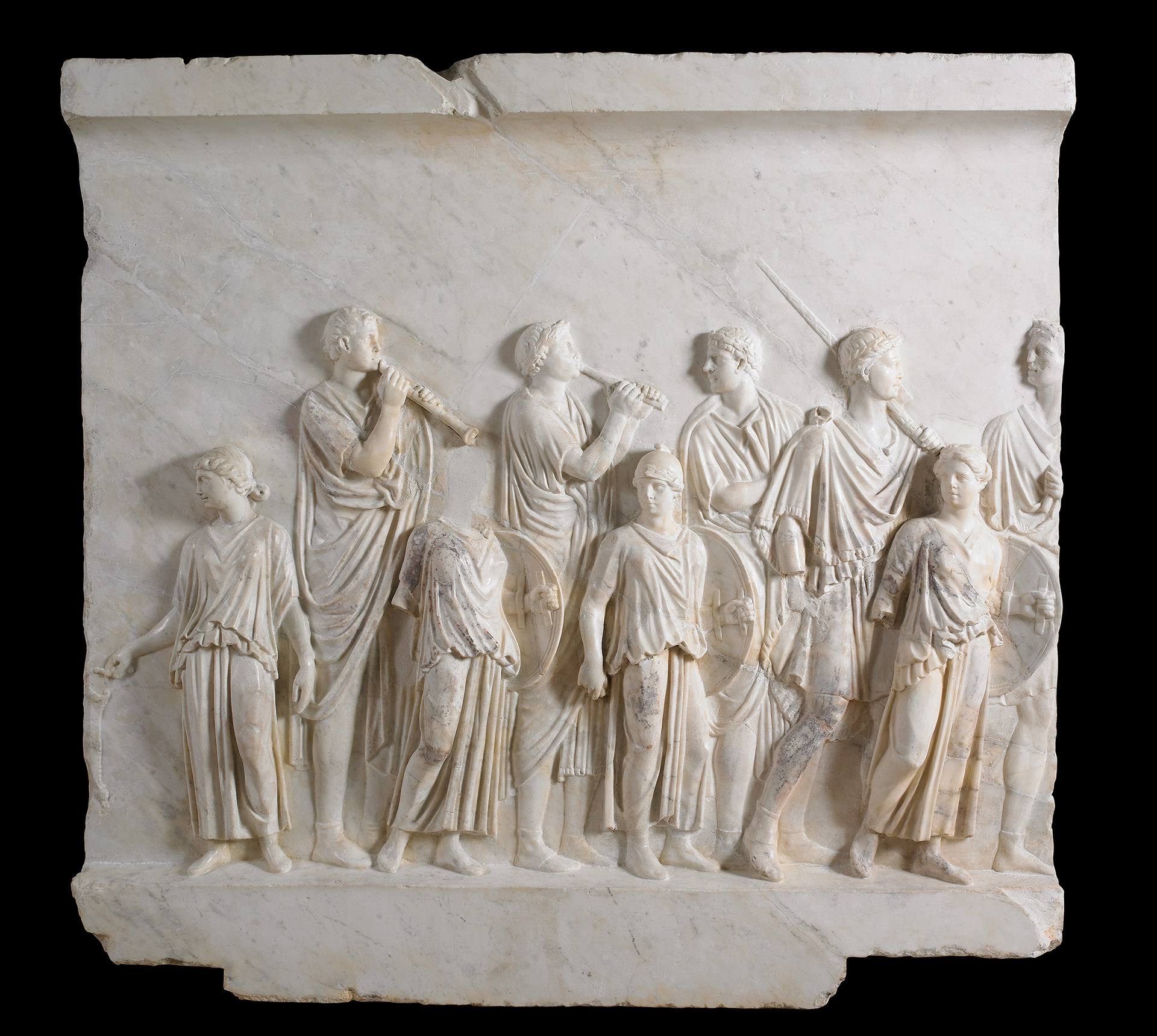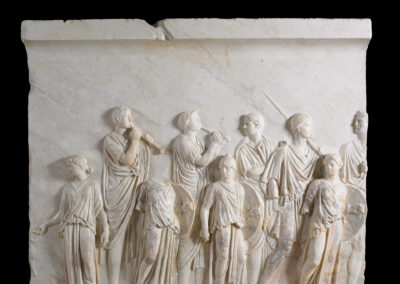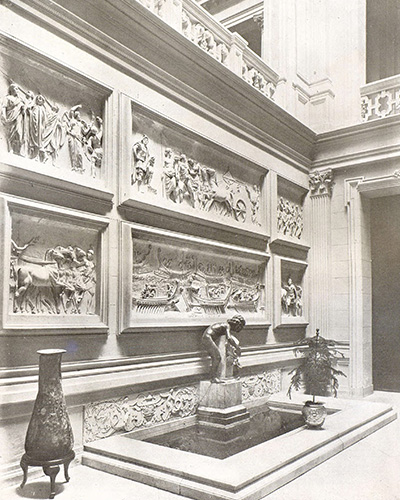This relief is one of nine pieces in a series from the Claudian period, known as the Medinaceli Cycle, which, collected by the 1st Duke of Alcalá during his Neapolitan viceroyalty, was originally exhibited, according to Órtiz de Zúñiga, in ".the walls of the water tankThe "Casa de Pilatos" is located in the Jardín Grande, in the wall that separates the Casa de Pilatos from the convent of San Leandro.
As it forms part of the aforementioned series, whose most singular pieces depict the battle of Actium, it has traditionally been identified as a procession commemorating this naval combat. Recently, Thomas Schäffer, in a monographic study of the series, without denying the link with the aforementioned battle that initiated the principality of Augustus, the subject of one of the friezes of the monument to which the series belonged, considers that this piece would form part of another frieze with a different representation, the triumphal procession of another victory: that of Claudius in Britannia in 43 AD, in which Roman naval forces also played a singular role. This would be the event that would precipitate the elaboration of the whole cycle, which would be a re-reading of the recent past, from the battle of Actium to this new British victory, placed at the service of the legitimisation of the emperor Claudius.




